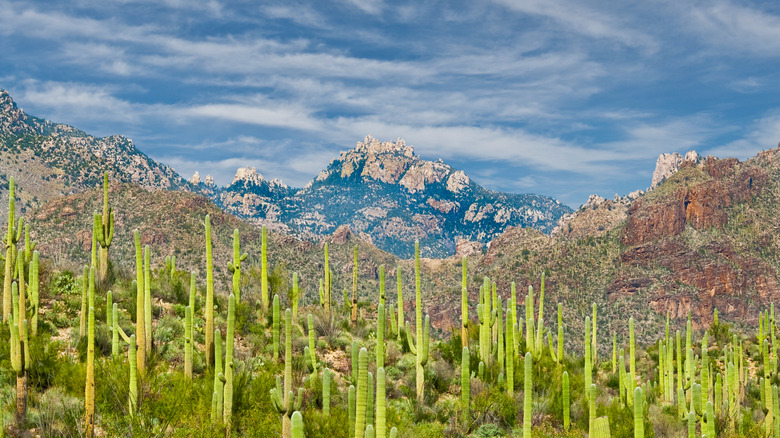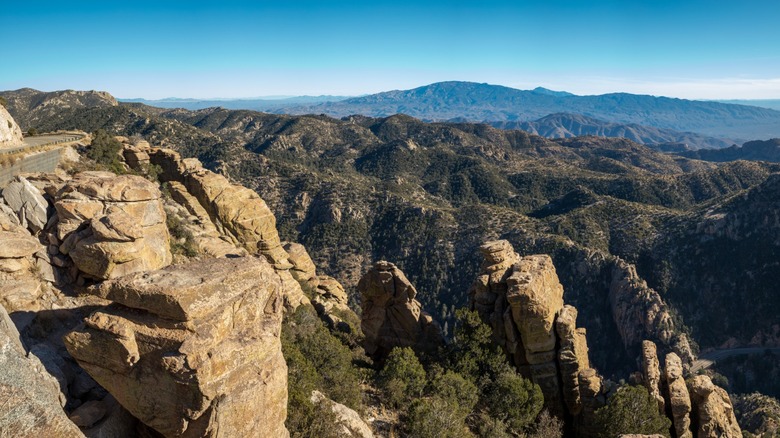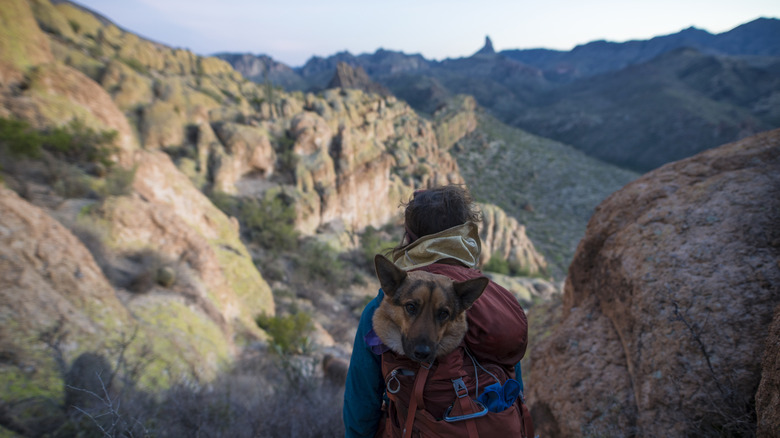Rising starkly from the desert floor, the ‘sky islands’ that make up Coronado National Forest are a series of stunning mountain clusters that reach heights of over 10,000 feet in spots. These little ranges add a splash of natural flair to the otherwise flat, monotonous landscape, pleasing the eye with towering rock formations and deep hues of ochre and red. Due to their range of elevation, they’re also home to some unique ecosystems and landscapes that host a stunning variety of plants, wildlife, and natural wonders (like this lesser-known Arizona canyon).
Unlike other such reserves in the U.S., Coronado National Forest doesn’t exist as a contiguous mass. It is instead 17 separate mountain ranges with eight designated wilderness areas scattered over southeastern Arizona and crossing into western New Mexico. Totaling 1,780,000 acres, this federally protected land boasts plenty of desert plus lakes, canyons, subalpine forests, and more, making it one of the Southwest’s great natural gems. The fact that the sky islands exist as small, stand-alone patches of wilderness also makes them easy to access, especially from the hub of Tucson — which also happens to be a perfect destination for a winter camping adventure.
Coronado National Forest’s rocky rises have a deep history
Named for Spanish conquistador and explorer Francisco Vázquez de Coronado (who visited the region in 1540), what eventually became the Coronado National Forest was founded in 1902 with the protection of the Santa Rita Forest Reserve. In 1953, this land was consolidated with several other parcels to create the reserve we see today.
The sky islands were first formed some 50 million years ago through a combination of volcanic activity and the movement of tectonic plates. The visible mountains are just the top of larger masses buried under millions of years of sediment. They range from 3,000 feet tall to the 10,699-foot rise of Mt. Graham, the highest point in the protected region.
Despite the extremely hot and arid environment that southern Arizona is famous for, the mountains of Coronado National Forest are also home to thick swaths of forest at varying elevations. In the winter, the mountains see a fair amount of snow, which blesses the otherwise parched land with water during warmer parts of the year in the form of alpine lakes, rivers, and streams. On sweltering summer days in the desert, the much cooler peaks and ridges of Coronado National Forest are a welcome sanctuary for both humans and animals hoping to escape the furnace-like conditions on the desert floor.




